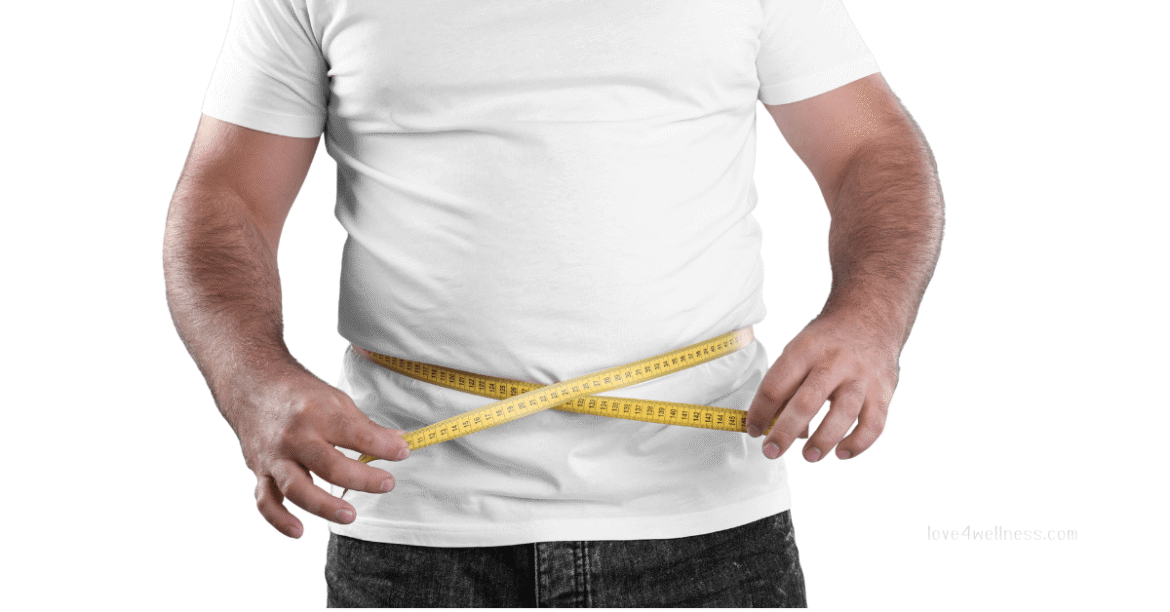Goal: Detail the different methods used to measure visceral fat in men, from highly accurate clinical tools to simple, accessible at-home methods. This provides the reader with a full picture of assessment options. Audience Focus: Men seeking a full understanding of measurement accuracy and practical tracking.
Introduction: Beyond the Scale—The Quest for Precision
You know what visceral fat is (Visceral Fat in Men: What It Is and Why It Matters), why it’s deadly (Health Risks of Visceral Fat in Men Over 40), and what blood markers it affects (Decode Your Blood Work: The Silent Signs of Visceral Fat and Metabolic Risk). But how do doctors and researchers get a precise measurement of the fat hidden deep inside your abdomen?
For years, the scale and Body Mass Index (BMI) were the only tools. But as you learned from the TOFI phenomenon (The Hidden Health Trap: Thin Outside Fat Inside (TOFI) Explained), these are poor indicators for deep internal fat. The true assessment of visceral fat involves knowing both the gold-standard clinical methods and the at-home measurements that provide 90% of the information you need to stay on track.
Let’s dive into the four main ways visceral fat in men is measured, from the most accurate to the most practical.
#1 The Gold Standard: Clinical Imaging (MRI & CT Scans)
These imaging techniques are the most accurate ways to quantify the exact amount of visceral fat. They are primarily used in research or for specialized medical diagnoses.
Magnetic Resonance Imaging (MRI) & Computed Tomography (CT) Scans
- How it Works: These scanners take detailed cross-sectional images of your entire abdomen. Software then calculates the precise area (usually in square centimeters) occupied by visceral adipose tissue (VAT) versus subcutaneous adipose tissue (SAT).
- Pros: Extremely accurate. They provide a true visual and quantitative measurement of visceral fat, removing all guesswork.
- Cons: Expensive, time-consuming, and not readily accessible for routine health checks. CT scans involve radiation, and MRIs are costly.
- When It’s Used: Primarily for research studies, or when a doctor needs to confirm a diagnosis in complex metabolic cases.
#2 The Hybrid Method: DEXA Scans
A DEXA (Dual-Energy X-ray Absorptiometry) scan is widely known for measuring bone density, but it also provides an increasingly popular, detailed breakdown of body composition.
DEXA Scan (Body Composition)
- How it Works: The scan uses a low dose of X-ray to differentiate between bone, muscle, and fat. Many modern DEXA machines now provide specific estimates or ratios of trunk fat, which serve as excellent proxies for visceral fat.
- Pros: Highly reliable, much faster than an MRI, and provides additional valuable data on total body fat and muscle mass (crucial for tracking muscle gain as you lose fat).
- Cons: Not always covered by insurance for body composition, and less accurate than MRI for visceral fat only.
- When It’s Used: Becoming standard for tracking progress in advanced fitness and anti-aging clinics.
#3 The Most Practical Method: Simple Circumference Measurements
You don’t need a million-dollar machine to track visceral fat effectively. The most powerful tool is a simple tape measure.
Waist Circumference (WC)
- How it Works: As detailed in our earlier post (Article #10), the waist measurement is the best external sign of internal fat pushing the abdominal wall outward. It’s highly correlated with true visceral fat levels.
- The Threshold: For men, a measurement of 40 inches (102 cm) or more signals a significantly increased risk.
- Pros: Free, accessible, and provides immediate, actionable feedback.
- Cons: Can be inconsistent if not measured correctly (must be above the belly button) and doesn’t distinguish between subcutaneous and visceral fat.
Waist-to-Height Ratio (WtHR)
- How it Works: Divides your waist measurement by your height (both in the same units, e.g., inches/inches).
- The Threshold: A WtHR above 0.5 is a major warning sign. This ratio is considered by many doctors to be a better predictor of metabolic risk than BMI alone, regardless of your height.
- Pros: Accounts for variations in height, making it a universal and powerful predictor of abdominal health.
#4 The Everyday Method: Bioelectrical Impedance (BIA)
You may encounter these devices on smart scales or handheld devices.
BIA (Smart Scales and Handheld Devices)
- How it Works: Sends a small, safe electrical current through your body. Fat tissue resists the current more than muscle tissue. Advanced devices use algorithms to estimate visceral fat levels.
- Pros: Extremely convenient for daily tracking.
- Cons: Accuracy can vary wildly depending on hydration levels, time of day, and the quality of the device. It is an estimate, not a direct measurement.
- When It’s Used: Best used for tracking trends over time, not for absolute accuracy.
Final Takeaway: Measurement for Motivation
Measurement is not just for tracking; it’s for motivation. While the gold standard (MRI) to measure visceral fat in men offers precision, your most powerful tools are the ones you use consistently: the tape measure for your waistline (aim for below 40 inches) and the blood tests (Decode Your Blood Work: The Silent Signs of Visceral Fat and Metabolic Risk) from your doctor.
